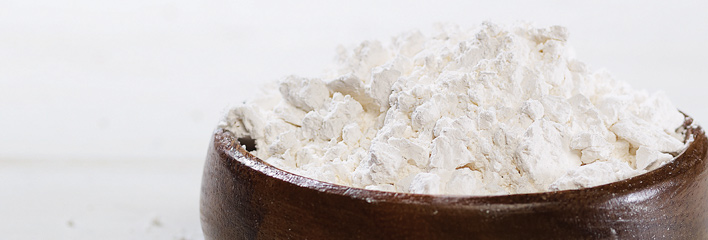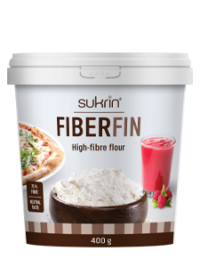Resistant starch, a natural fibre
FiberFin consists of modified corn starch. This is a type of starch the digestion enzymes in our bodies have a harder time breaking down.
Regular starch is metabolised and turned into grape sugar in the body – then used as energy. Resistant starch, on the other hand, isn’t digested like other starches. Instead, it behaves like a dietary fibre. It’s been consumed by humans for thousands of years through foods like beans and lentils, to mention a few.
Researchers across the globe are beginning to recognise this incredible fibre and the beneficial health effects it holds. One tablespoon of FiberFin provides 6 grams of fibre, and so is a simple way of increasing your daily intake.
How do you use FiberFin?
As a dietary supplement:
You have to consume FiberFin every day to gain full health benefits from it. Try sprinkling FiberFin over your cereal in the morning, or mixing it with juice or milk. A single tablespoon of FiberFin provides a full 6 grams of resistant starch.
In baking:
Any time you use flour, you can use FiberFin. Simply substitute 10-20 % of the flour with FiberFin – the flavor and appearance remain unchanged! If you substitute 7 % of the flour in a pizza dough recipe, the fibre content will reach that of wholegrain bread. The dough will be easier to work with, too.
How much FiberFin should I use when baking?
By replacing 10% of your flour with FiberFin, you’ll have done a lot for your fibre intake. If you find it tricky to know how much you should use, make things easier for yourself by mixing a box of FiberFin (400 g) with 2 kg of wheat flour. This ready-made flour mixture will contain 17% FiberFin and can be used any time you want to bake more fiber-rich without it affecting the result.
Research on FiberFin
A range of studies have been published that document the advantageous health properties of FiberFin. Here are some of the benefits that have been uncovered:
- positive effect on weight control (increased sense of fullness, increased fat burn and increased insulin sensitivity)
- reduced glycaemic load (GI/GL) when FiberFin substitutes other flours
- lower blood sugar and insulin levels with the meal following FiberFin intake
- positive effects on the intestinal system, including production of beneficial branched-chain amino acids (BCCAs), lower pH and lower ammonia concentration
- reduced duration and severity of diarrhoea in adults and children when they consumed FiberFin in nutritional drinks
Read the studies
Resistant starch improves insulin sensitivity:
Resistant starch improves insulin sensitivity in metabolic syndrome.
Resistant starch lowers insulin and glucose levels after meals:
Resistant starch: the effect on postprandial glycemia, hormonal response, and satiety.
Resistant starch: promise for improving human health:
Resistant Starch: Promise for Improving Human Health.
Resistant starch and energy balance: impact on weight loss and maintenance:
Resistant starch and energy balance: impact on weight loss and maintenance.

